Every new mama deserves a giant hug after birth. One that is both supportive and nurturing. No matter what your circumstances are, you can get this kind of hug everyday. With the self-care practice of postpartum belly wrapping, you can be assured you are getting the perfect healing hug your body needs. It may quite literally be, your main squeeze. ![]()
Postpartum belly wrapping, also called belly binding, is a traditional practice which compresses your core after birth, offering much needed support and helps you feel put back together.
Traditionally it is done with a long piece of cotton cloth, which is wrapped many times around your entire torso and hips (ultimately producing a fabulous hug!). This secure container supports your organs in returning to their pre-pregnancy size and position, helping you heal faster and more completely.
The Culture of Belly Wrapping
Many cultures around the world practice the art of postpartum bellywrapping, which has recently been gaining popularity in mainstream Western culture. Although the specifics of fabric material, length, wrapping methods, and time worn differ between cultures, the purpose is one and the same: supporting the new mamas womb healing.
Latin America
In Mexico and Central America, women wrap themselves with a scarf called a faja. The faja is believed to prevent air from entering and accumulating in the new mama.
Their belief is that the faja helps the uterus from falling down and also contract down to its pre-pregnancy size. Many types and styles of material are used to make a faja or belly wrap but the most common is a stretchy knit cotton/spandex blend (which is my favorite!). The faja is typically worn for at least 2 weeks except at night.
In Latin American cultures, the position of the uterus is at the very core of traditional birth medicine. “Mayan” abdominal massage is still a common practice and combining that with belly wrapping helps to not only heal the muscle wall but actually help place the “womb” back in its proper position.
Africa
African mamas bind their bellies with a 2-3 yard piece of traditional (non-stretchable) cloth at night for the first 4 to 6 weeks after the birth…but not until after receiving a belly massage with warm oil (from her mama), and takes a hot bath (similar to Ayurveda!😁).
Southeast Asia
The bengkung style of wrap originated with women in Southeast Asia. In Malaysia, postpartum mamas belly wrap for 6 weeks after birth.
In the Malaysian tradition, the womb is the center to a woman’s wellness. They consider it essential to take care of a woman’s womb at all stages of life, but especially after birth. The tradition originated in the palaces, with Royal mamas using it to help them recover quickly. It became tradition all over southeast Asia and is still part of the culture today.
This belly wrapping technique uses a long piece of cotton cloth, starts at your hips and moves upward, wraps around your waist, knots in front and repeats up your abdomen to just under your breast.
Japan
In Japan, postpartum women enjoy a period of time for ansei, or rest and rejuvenation.
Back in the day, new Japanese mamas would spend 3+ months inside with their babies, wrapped up in their sarashi belly wrap and cozy blankets, expected to just rest, nouish themselves and nurse their babies.
This lying-in period is similar in Ayurvedic postpartum care and important for proper postpartum rejuvenation. It’s very important to rest (and nourish) deeply after giving birth if you want to regain all your vitality (and then some).
While it’s no longer common for Japaneese mamas to spend THAT long in bed with their newborns, many of the postpartum practices are still done in many areas. Belly wrapping is one such practice.
The traditional Japanese method of belly binding is most closely related to that of the Malaysian bengkung binding. However, the sarashi postpartum belly wrapping method is used by folding the material rather than twisting the material like the bengkung binding.
The sarashi is shorter than the bengkung and is about 13 feet in length and between 8-9 inches in width. It starts low on the hips and end around the solar plexus. As the new mama’s belly contracts, the cloth is shortened and tightened.
India
In India, the practice of postpartum belly wrapping is called veshtanam. where traditionally new mamas wrap their mid-section with colorful cotton sarees, (or strips of long cotton cloth) after a hot bath, for at least 5-6 hours a day, for 42 days.
Veshtanam belly wrapping is an important aspect of the Ayurvedic postpartum care practices called Soothika Paricharaya. The basis for daily belly wrapping is that after birth, the air and ether elements become imbalanced in the new mama, including the womb. There is a big empty space where the baby once was, and if left untouched, can cause multiple inbalances in the new mama including a deep feeling of emptiness.
By binding the belly regularly, it helps keep out the excess air and ether elements, supports the organs to go back to where they belong, and brings a sense of warmth and comfort to the entire area.
Now let’s look at why so many cultures around the world use bellywrapping as a form of postpartum healing.
Why Belly Wrapping Is Important
During the later stages of my pregnancy, I was big – and pretty darn uncomfortable. I needed to pee every two seconds, my stomach felt like it was in my lung, and oh – the heartburn! I ate a pint of ice cream every day to cool it down (Yes I really did that, and no I don’t recommend it!).
These sensations are all reminders that many of our organs have had to move and stretch to accommodate our precious child growing inside of us.
Wearing a wrap that compresses your mid-sectiion will encourage those displaced organs to return to their original size and position, ultimately helping you to regain your shape and quicken your postpartum recovery.
Benefits of Postpartum Belly Wrapping
In addition to gently compressing the torso and guiding the organs back to their pre-pregnancy position, there are many additional benefits to postpartum belly wrapping including:
- supports pelvic floor
- helps repair Diastasis Recti
- reduces tummy pooch
- adds warmth to womb and kidneys
- strengthens stretched abdominal muscles
- reduces bloating and discomfort
- stabalizes loose ligiments
- helps prevent low back pain
- helps maintain good posture when breastfeeding
- easier to hold baby for longer periods
- supports stable emotions
- helps establish a daily self-care routine
- return to pre-pregnancy shape faster
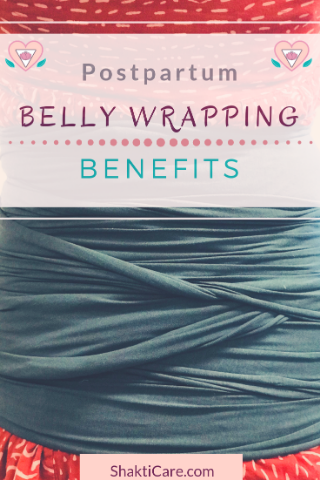
Common Reasons Mamas Don’t Belly Wrap
In my experience as a postpartum doula, most women are interested in wearing a belly wrap, but for one reason or another, it just doesn’t manifest. Generally, once the baby is born, all bets are off. It’s exponentially more difficult to manifest after your baby is born, so don’t put it off!
Classic reasons mamas don’t belly wrap:
- have never heard of it
- no-one they know does it
- the modern-style belly binder they chose ended up being the wrong size or just wasn’t comfortable.
- the bengkung-style binder took too long to put on and just wasn’t practical
- they didn’t realize how much they would need that support until the baby was born
- plan to make their own, but don’t make it a priority before the baby is Earthside
- don’t have guidance on how to belly wrap successfully, get frustrated and give up
Generally, once the baby is born, all bets are off. It’s exponentially more difficult to manifest after your baby is born, so don’t put it off!
I was one of the many mamas that didn’t really think about belly wrapping until it was too late. I was 22 and was just winging it really. We ended up trying to tie a scarf around my belly, but it really wasnt supportive at all. I remember feeling bummed that I hadn’t thought that piece through very well. ☹️
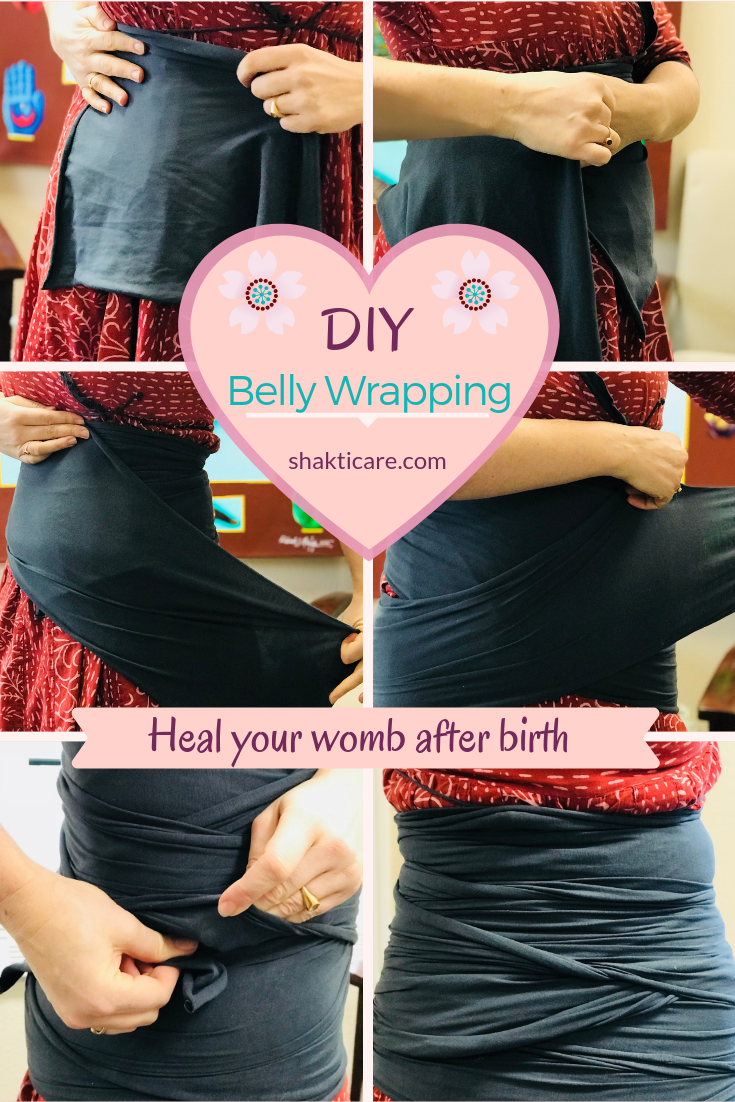
Types of Belly Wraps
Nowadays, there are plenty of belly binding products out there to choose from. It can be difficult to know which one is the right one for you.
Modern Wraps & Girdles
First we need to establish that there is a difference between a modern postpartum compression-type garment and a waist trainer/girdle.
A modern compression garment is designed to help shrink the womb, speed recovery, and decrease swelling and fluid retention. These are worn short term and not meant to cause any changes to your body that wouldn’t have happened on their own.
However, postpartum girdles, waist trainers, or corsets are completely different. Instead of being designed to improve recovery, these type of products are designed for extreme binding that is meant to create an exaggerated hourglass figure.
Postpartum belly wrapping isn’t about “looking skinny”, it’s about gently supporting your organs to return to their original size and position.
That being said, if you are interested in the more modern style postpartum compression garments, they come in different sizes, have different closure systems and are sometimes not machine washable.
If you plan to go this route, it is wise to do your due diligence before your baby arrives. Make sure you buy the right size, are comfortable with the material, as well as the closure system. I recommend products that support your hips, belly and waist.
Traditional Wraps
The more traditional-style of belly wrap is using a very long piece of cotton cloth, that is wrapped around the entire torso and hips, until your midsection is comfortable and secure.
Added benefits of using this traditional-style belly wrap is that it’s generally “one size fits all”, as well as being comfortable, breathable, and machine washable!
The Bengkung Belly Bind is a beautiful belly wrap that is made in the traditional style of Malaysia and has gained popularity amongst natural mamas in recent times. This style of belly wrap, you wrap and twist the fabric again and again to compress your torso.The downside of the Bengkung is while beautiful, is a little more involved in putting it on, which means busy mamas might not do it everyday or abandon it altogether.
In my postpartum recovery program Fully Healed Mama, I teach a comfortable and simple technique of belly wrapping, that is fast and comfortable for daily wear. To learn more click here.
Belly Wrapping Tips
- start wearing as soon as possible after the birth for at least 40 days
- make sure you have the right amount of compression
- choose breathable material
- make sure your belly wrap will actually fit after the birth
- choose one that is comfortable and easy to put on
- C-section mamas should wait until the incision heals before belly wrapping
- don’t wait to figure it out until after your baby is born
- make sure your traditional belly wrapping cloth is long enough (at least 13 feet!)
- a sheet, shawl or scarf are not going to work
- get more than one so you can wash it easily
- choose one that you will feel good wearing
- put it in your hospital bag (even if you are planning a home birth)
Please remember to include belly wrapping in your postpartum care plan and make sure that you are happy with your belly wrap before your baby arrives! This is a simple postpartum care practice that will contribute significantly to your healthy recovery after birth.
If you are a new or expecting mama and would like to learn the art of belly wrapping within a greater context of Ayurvedic postpartum healing, consider joining my Fully Healed Mama program.
If you would just like to learn belly wrapping in a single online session, you can book and appointment with me here.

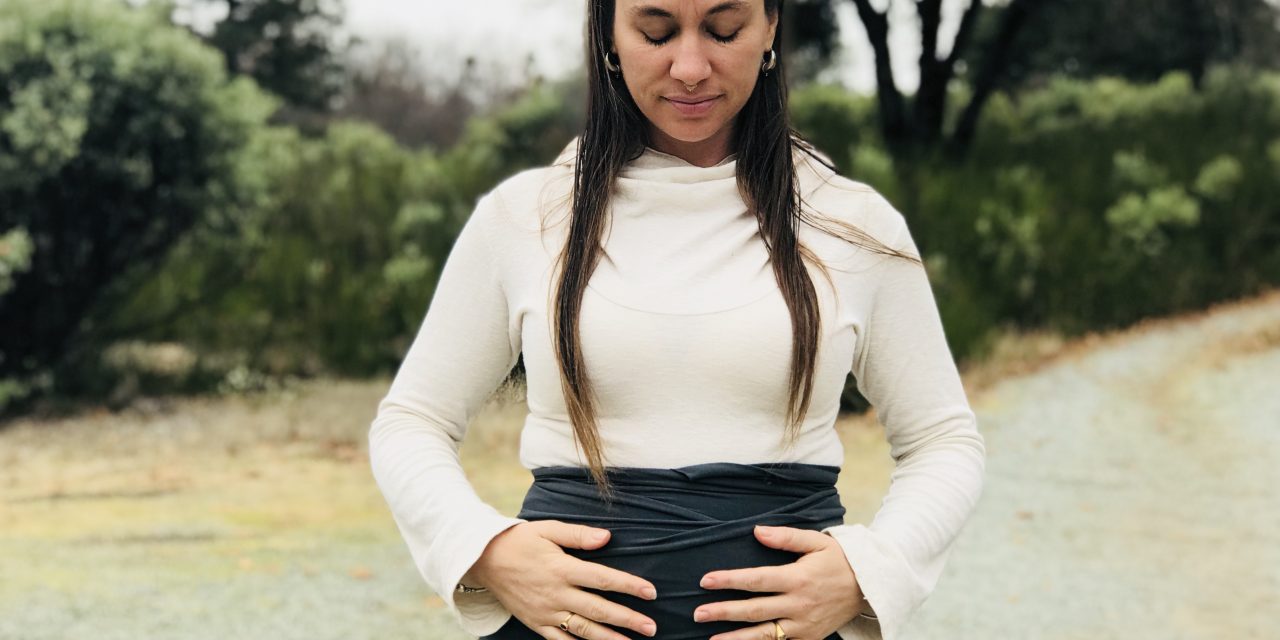
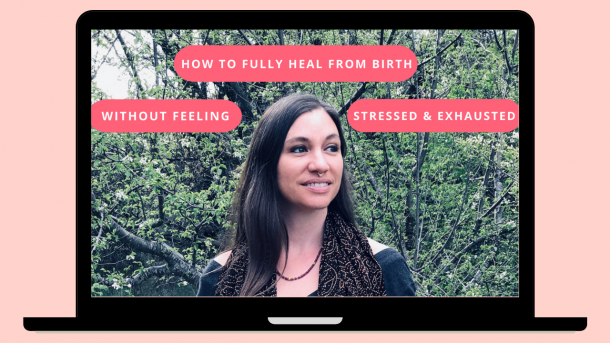


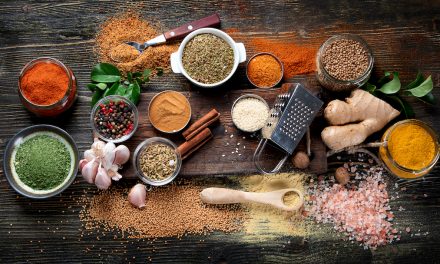

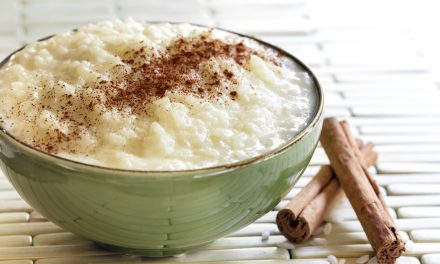

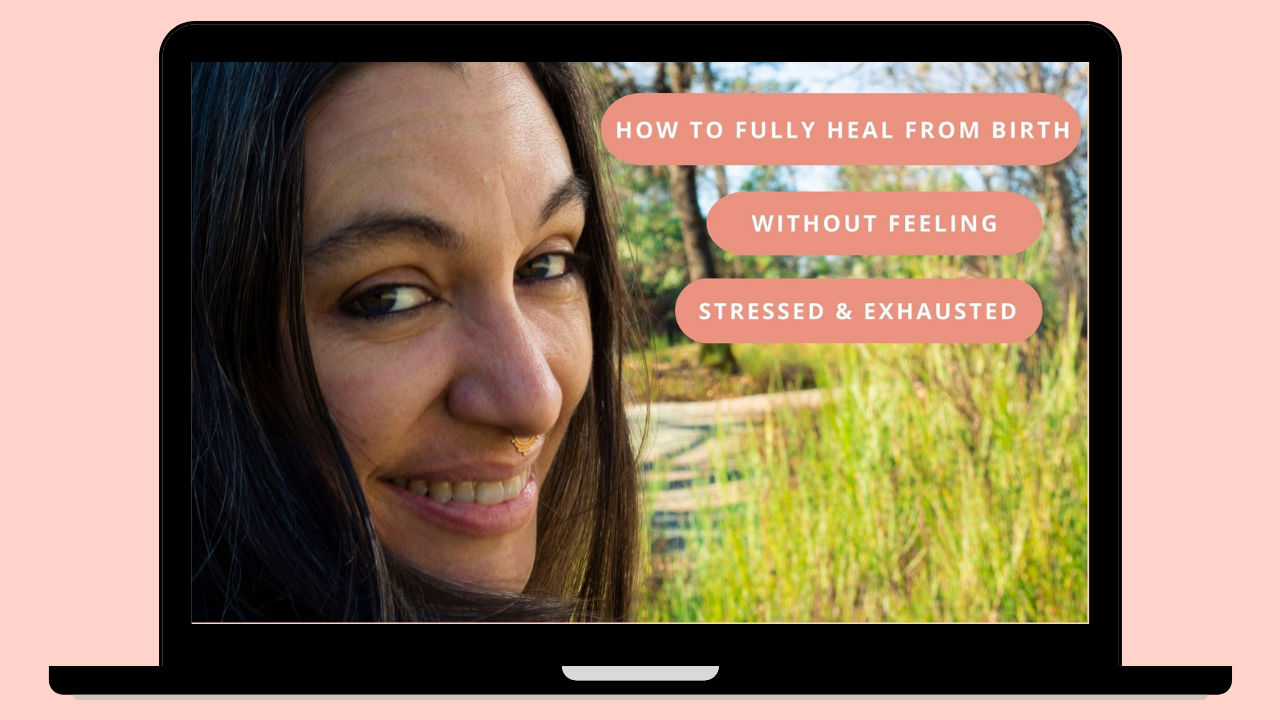




Hi Ameya, I’m looking into the belly wrapping for my daughter-in-law. I’m just wondering what the best way to do this is if you’re nursing. Can you wrap the cloth under your clothes? All the pictures I see have the wrap over the clothes, which would be inconvenient when you need to nurse. Thanks! 🙂
Yes, you can totally wrap your belly under your clothes. Not a problem at all.
Can you be more specific about the dimensions of the fabric? How long and wide should each band be? I don’t know if it’s my baby brain or my current medical state (bronchitis) but I’m ready to go to the store to make this right now and I want it to be right, it’s just not making sense to me.
The dimensions are 15 feet by 10 inches. You need just one strip, but the cloth you buy at the craft store will be wide enough for 5 strips. I would recommend the cotton knit fabric over the cotton muslin because because of the stretch. More comfort and flexibility.
So what are the dimensions of each individual strip when you say you have enough for 5 strips?
10” X 15’
How long should you wear the wrap at a time before giving your belly a break?
You can wear it as much as is comfortable. A lot of mamas wear it during the day and take it off when sleeping.
Hi, I had C sec, it’s been 3months, can I wear wrap now or it’s late
It’s not too late. I’m sure you will gain some benefit from it. Better late than never:)
Hi I’m 4 months post partum, do you think I can still wear the wrap? Thanks
Absolutely.
How tight should the wrap be? I want to support my organs, but i don’t want the wrap to cause atrophying of my core muscles which heard can happen with the store bought ones
thanks
If you use a knit cotton fabric, than there is give and take. Just tie it until you feel secure and supported. Like a nice hug.
Greetings Ameya! ♡
I am around 4 weeks postpartum and having difficulty with my uterus prolapsing, im wondering is this would be okay for me to use/beneficial to use?
If you already are experiencing uterine prolapse, I would consult with a doctor first. Belly binding can help prevent uterine prolapse, but if you are already experiencing it, I would use caution.
Hi! I am wondering if a baby wrap (solly baby brand) would work for postpartum belly binding?
I can’t say for sure, but it should be around 15 feet in length. If you are planning to carry your baby with it, than you should for sure get a separate belly wrap, so you can use it regularly.
Hello! I am 3 weeks postpartum today. Would it still be helpful to belly band if I started tomorrow??
Yes! It’s not too late at all.
Do you have an instructional video 9n how to wrap?
Hi Meagan,
I do as a part of my online recovery program Fully Healed Mama. Register Here to learn more on how to fully heal from birth.
Hi how long should I wait to belly binding after c section
As soon as you feel comfortable. 24 hours is great. It’s very helpful after a C-section